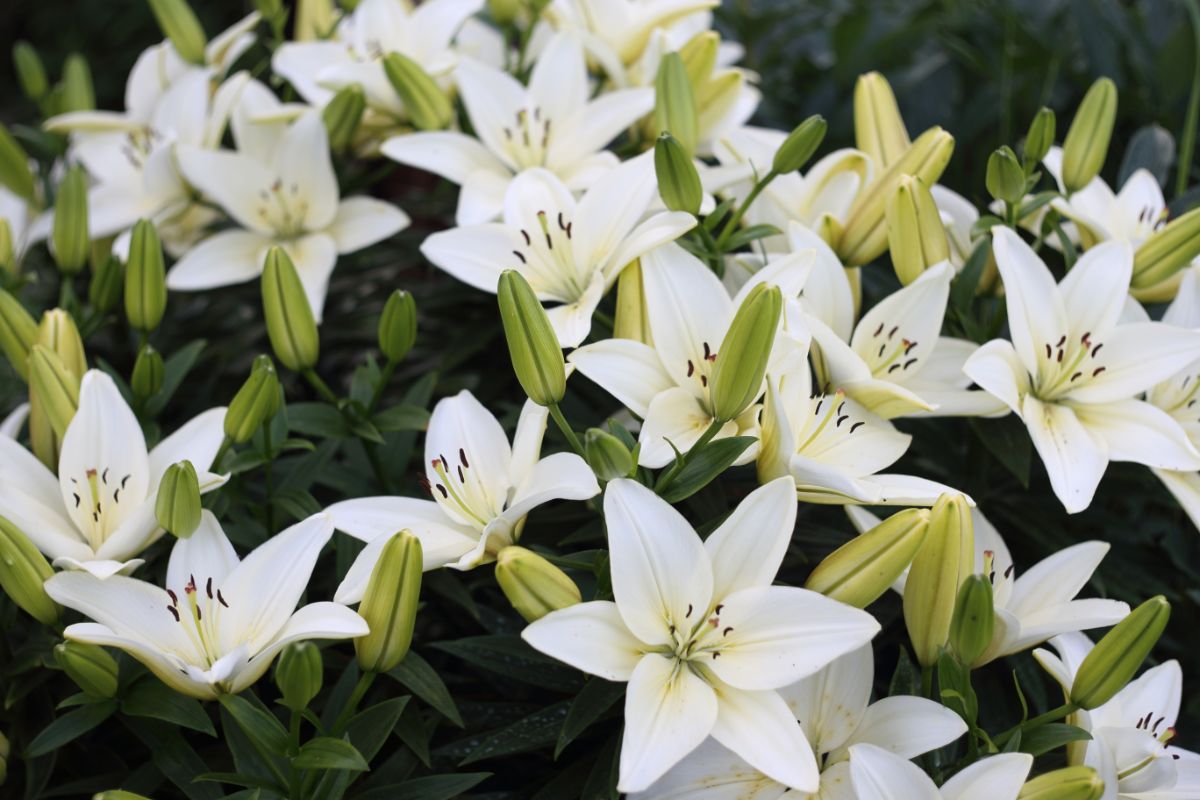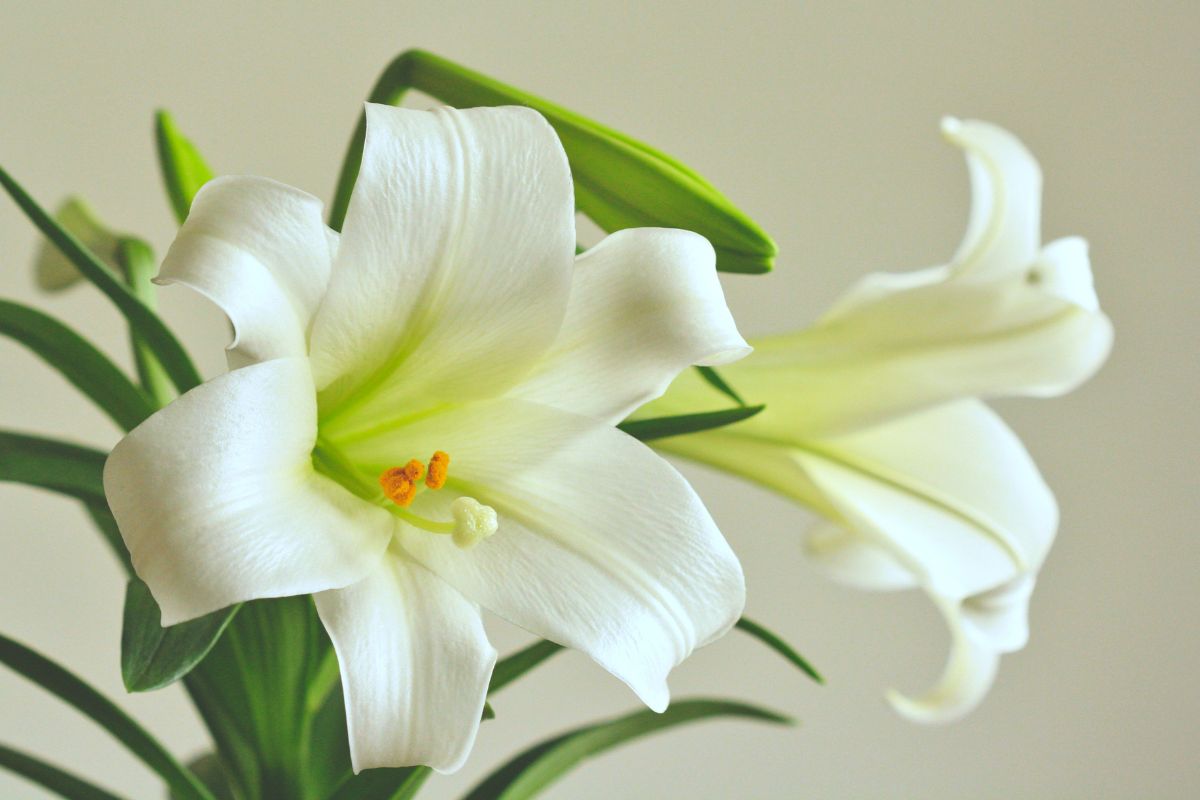Lilies are beloved for their beautiful appearance and sweet smell, making them a popular choice for gardens and floral arrangements alike.

However, for those looking to add lilies to their garden, a common question arises: are lilies perennials or annuals?
Understanding the growth habits of lilies is essential for successfully growing and caring for these plants.
In this article, we will explore the different types of lilies and their growth habits, as well as provide tips for growing and caring for these beautiful flowers.
By the end of this article, you’ll have a better understanding of whether lilies are the right choice for your garden.
What Are Perennials?
Perennials are plants that live for more than two years and return to grow every year.
They typically have a root system that persists underground, even during the plant’s dormant phase, and they are able to regrow leaves and stems from the base of the plant each growing season.
Perennials come in many different shapes, sizes, and colors, and they can be found in a wide range of environments, from forests and meadows to gardens and landscapes.
Some common examples of perennials include daisies, lilies, irises, and hostas.
What Are Annuals?
Annuals are plants that complete their entire life cycle, from seed to maturity, within a single growing season.
This means that they typically germinate, grow, flower, produce seeds, and die within one year.
Unlike perennials, annuals do not have a persistent underground root system, and they rely on producing a large number of seeds to ensure their survival from year to year.
Some common examples of annuals include marigolds, petunias, zinnias, and sunflowers.
Because annuals are typically grown for their showy flowers, they are often used in gardens and landscaping to provide seasonal color and interest.
Are Lilies Perennials Or Annuals?
Lilies are perennials.
They are a group of flowering plants that are part of the Lilium genus and are characterized by their large, showy, trumpet-shaped flowers that can be a range of colors, including white, yellow, pink, red, and orange.
Lilies grow from bulbs, which are a type of underground storage structure that allows the plant to survive through periods of dormancy.
Each year, the bulbs produce new shoots that grow into tall, leafy stems, topped with clusters of flowers.
While some species of lilies may only bloom once per growing season, many varieties will bloom multiple times throughout the year, making them a popular choice for gardens and landscapes.
About Lilies
Lilies are a type of flowering plant that belongs to the family Liliaceae.
They are native to temperate regions of the Northern Hemisphere, but have been widely cultivated and hybridized for ornamental purposes.
Lilies are known for their showy and often fragrant blooms, which come in a variety of shapes, sizes, and colors. Lilies grow from bulbs or rhizomes, and typically bloom in the summer or early fall.
They are commonly grown in gardens, as well as in pots and containers for indoor or outdoor display. Lilies are often used in floral arrangements for their beauty and long-lasting blooms.
There are different types of lilies, including Asiatic, Oriental, trumpet, daylilies, and calla lilies, each with their own unique growth habits and requirements (Calla Lilies are also known as Zantedeschia Aethiopica – for more flowers that start with a Z, read here).
Some lilies are perennials and will come back year after year, while others are annuals and will need to be replanted each year. Lilies prefer well-drained soil and full sun to partial shade.
They require regular watering and fertilization to promote healthy growth and abundant blooms. Lilies can also be susceptible to pests and diseases, so proper care and attention is necessary to keep them healthy.
Overall, lilies are a beautiful and versatile flower that can add color and fragrance to any garden or floral arrangement. With the right care and attention, lilies can thrive and bloom for years to come.
Types Of Lilies & Growing Habits

There are many different types of lilies, each with their own unique growth habits. Here are a few common types of lilies and their growth habits:
- Asiatic lilies: Asiatic lilies are a popular type of lily that grow from bulbs and produce showy, upward-facing blooms in a variety of colors. They are generally considered to be a perennial plant, meaning they will return year after year.
- Oriental lilies: Oriental lilies are another popular type of lily that grow from bulbs and produce large, fragrant flowers in shades of pink, white, and red. They are also perennials.
- Trumpet lilies: Trumpet lilies are a taller variety of lily that grow from bulbs and produce large, trumpet-shaped blooms in shades of white, yellow, and pink. They are also perennials.
- Daylilies: Daylilies are a type of lily that grow from a clump of roots and produce showy blooms in a variety of colors. They are perennials and are known for their ability to tolerate a wide range of growing conditions.
- Calla lilies: Calla lilies are a unique type of lily that grow from rhizomes and produce trumpet-shaped blooms in shades of white, pink, and yellow.
They are considered to be semi-perennials, meaning they can be grown as perennials in mild climates, but may need to be treated as annuals in colder regions.
Each lily variety has its specific growth habits and requirements. Understanding the type of lily you are growing can help you provide the right care and growing conditions for a healthy and abundant bloom.
Tips For Growing Lilies
Here are some tips for growing lilies:
- Choose a location: Lilies prefer a location that receives full sun to partial shade. They also prefer well-draining soil that is rich in organic matter.
- Planting: Plant lily bulbs in the fall or early spring, depending on the climate. The bulbs should be planted at a depth of about 3 times the height of the bulb.
- Watering: Lilies need regular watering, especially during the growing season. However, be careful not to overwater them, as they do not like to sit in water.
- Fertilizing: Lilies benefit from regular fertilization. Apply a balanced, slow-release fertilizer in the spring, and again after the flowers have faded.
- Mulching: Mulching around the base of the lilies can help to retain moisture in the soil and suppress weed growth.
- Support: Some tall lily varieties may require staking to prevent them from toppling over in windy conditions.
- Deadheading: To promote continued flowering, remove the spent blooms by cutting them off just below the base of the flower.
- Winter care: In colder climates, it may be necessary to provide some protection for lilies during the winter months. Mulching around the base of the plants can help to insulate the bulbs from extreme cold.
By following these tips, you can enjoy the beauty of lilies in your garden for many years to come.
Final Thoughts
Lilies are beautiful and elegant perennial plants that can add color and charm to any garden or landscape.
Unlike annuals, lilies grow from bulbs and return year after year, making them a popular choice for gardeners who want to enjoy their beauty for seasons to come.
By providing the right growing conditions, such as full sun to partial shade, well-draining soil, and regular watering and fertilization, you can help your lilies thrive and produce beautiful flowers.
With these simple growing tips, you can enjoy the beauty and fragrance of lilies in your garden year after year.
- Interesting Flowers That Start With A - July 21, 2023
- Interesting Flowers Beginning With H - July 21, 2023
- 14 Fascinating Flowers That Begin With C - July 20, 2023
